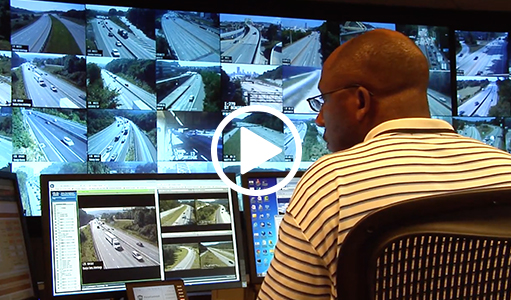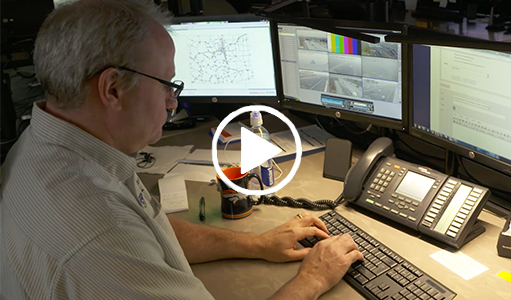Weather-Savvy Roads
Resources to Aid Implementation
Printable version [PDF 978 KB]
You may need the Adobe® Reader® to view the PDFs on this page.
Contact Information: Operations Feedback at OperationsFeedback@dot.gov
The Weather-Savvy Roads(WSR) initiative promotes deployment of two distinct road weather management solutions that enable transportation agencies to be proactive in managing the surface transportation system ahead of and during adverse weather events. It is being conducted under the fourth round of Every Day Counts (EDC-4). Hosted on the Federal Highway Administration (FHWA) Road Weather Management Exchange, the WSR Resource Toolkit provides information to practitioners looking to learn more about what is needed to successfully adopt WSR's two distinct road weather management solutions: Pathfinder and Integrating Mobile Observations (IMO). Located at https://go.usa.gov/xnSqy, users will find promotional publications, videos, case studies, fact sheets, and more.
The following case studies, fact sheets, and videos highlight key topics for successful implementation of Pathfinder and IMO, along with examples of effective deployments across the country.
Pathfinder
Pathfinder is the collaboration between the National Weather Service, State Departments of Transportation (DOTs), and support contractors to share and translate weather forecasts and road conditions into consistent transportation impact statements for the public.
Fact Sheets
- Pathfinder Overview: Provides an overview of Pathfinder, including the benefits, Pathfinder partners, and steps for implementation.
- Weather-Savvy Roads Benefits and Costs: Describes the benefits and costs that agencies might expect from deployment of Pathfinder and IMO solutions.
- Pathfinder Implementation Recommendations: Provides a summary of five key recommendations for DOTs based on lessons learned to date.
Case Studies
- Colorado's Pathfinder Process: Illustrates a successful Pathfinder process from the State of Colorado.
- Wyoming Department of Transportation Total Solar Eclipse: Focuses on the implementation of Pathfinder by the Wyoming DOT to help coordinate responses during a total solar eclipse on August 21, 2017.
- Truckee, California—Adopting Pathfinder Principles: Illustrates the use of Pathfinder principles by a rural municipality, namely Truckee, California.
Videos



- EDC-4 Weather-Savvy Roads Overview Video
- Making a Difference with Pathfinder and IMO
- Implementing Pathfinder in Your State
- The Power of Pathfinder
For more information, visit the Pathfinder Resource Toolkit at http://go.usa.gov/xnS8m.
Integrating Mobile Observations
Integrating Mobile Observations (IMO) involves collecting weather, road condition, and vehicle data from agency fleets to improve situational awareness of road conditions. It builds on vehicle-based mobile technologies and real-time wireless communications for data sharing. The data provide maintenance and operations managers with a detailed view of the weather and road conditions as well as asset locations along the highway network.
Fact Sheets
- IMO Overview: Highlights IMO, IMO Early Adopters, benefits, and tips for deployment based on lessons learned.
- Getting Data into the Weather Data Environment: Informs states implementing IMO under Every Day Counts (EDC-4) how to share their data with the Weather Data Environment.
- Weather-Savvy Roads Benefits and Costs: Describes the benefits and costs that agencies might expect from deployment of Pathfinder and IMO solutions.
- Using the National ITS Architecture for Implementing Weather-Savvy Roads: Shares high-level information on using the National Intelligent Transportation Systems Architecture to support the systems engineering process necessary for IMO projects.
- Integrating Mobile Observations: Lessons from Front Line Deployers: Incorporates many of the lessons learned and best practices that were captured from the Minnesota, Nevada, and Michigan DOTs that have been involved with IMO for several years.
Case Studies
- West Des Moines: A City's Approach to Vehicle-based Technologies: Reviews a local agency's approach to leverage available technologies that enhance winter maintenance operations in West Des Moines, Iowa.
- Leveraging Multiple Communications Systems for Vehicle-Based Data Sharing: Nevada Department of Transportation Case Study: Reviews the approach to leverage radio, cellular, Wi-Fi, and Dedicated Short Range Communications for sending IMO data to cloud resources and the Nevada Data Exchange.
Videos


- EDC-4 Weather-Savvy Roads Overview Video
- Making a Difference with Pathfinder and IMO
- The Power of IMO
- The Potential of IMO
For more information, visit the IMO Resource Toolkit at http://go.usa.gov/xnS8V.
